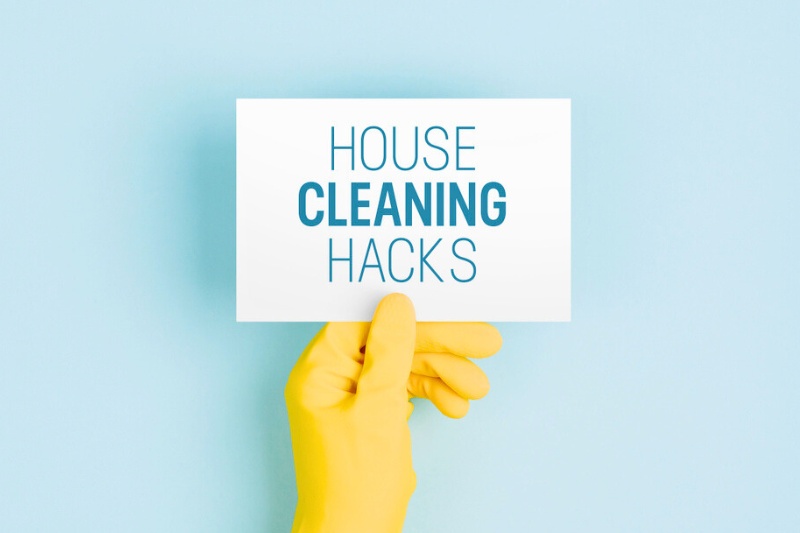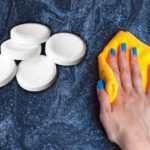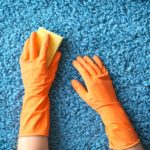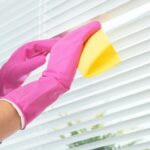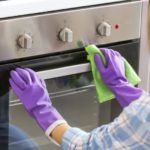Looking for some cleaning hacks to make your chores quick and easy? You’re in the right place! We have a list of 30 cleaning hacks right here that will blow your mind, each designed to make your cleaning routine more efficient and effective.
These genius hacks cover a wide range of cleaning needs, using everyday household items to make your cleaning routine effortless and eco-friendly.
1. Make a DIY All-Purpose Cleaner
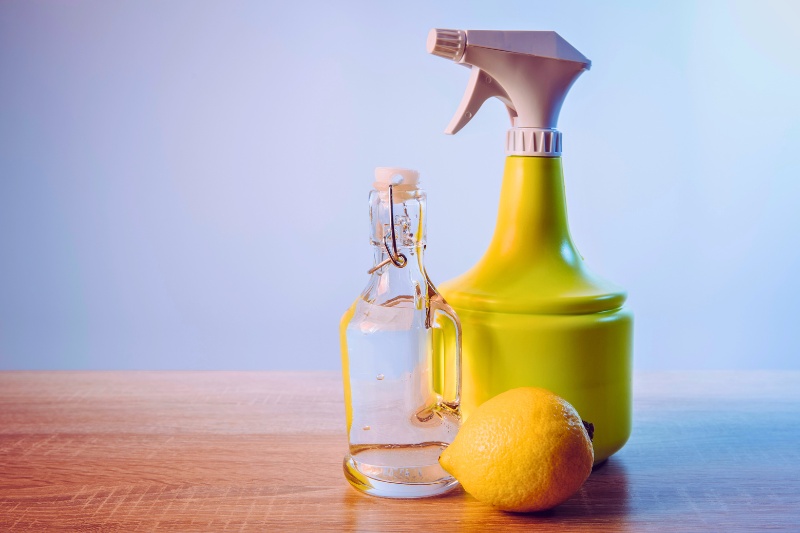
You can create a versatile and natural all-purpose DIY spray cleaner by mixing equal parts water and white vinegar.
Add a few drops of lemon juice or essential oils for a pleasant scent and extra cleaning power, and pour the mixture into a spray bottle for easy application.
This DIY cleaner is effective for countertops, kitchen surfaces, glass, and even bathroom areas. However, always test it on an inconspicuous area first to double-check it won’t cause damage.
2. Microwave Cleaning with Lemon Slices
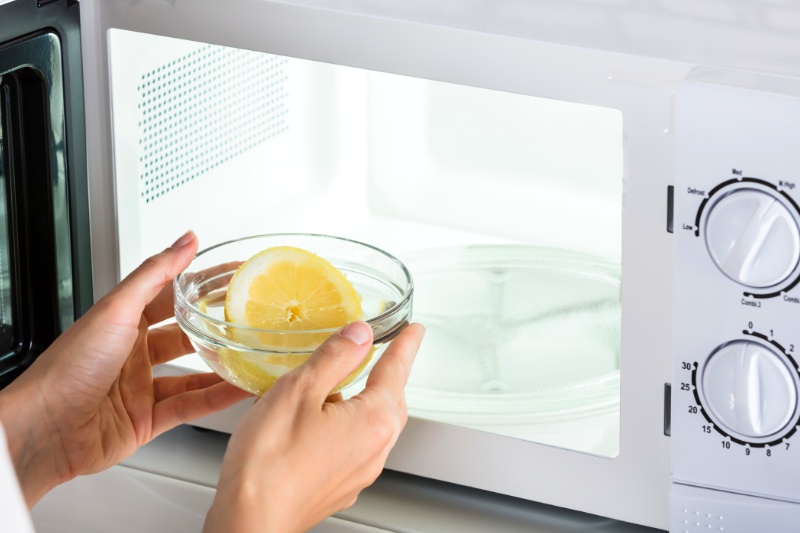
This microwave cleaning hack makes it possible to clean your microwave in minutes.
Place a microwave-safe bowl filled with water and lemon slices inside. Heat the mixture for around three minutes or until it produces steam, then let it sit for about five minutes more.
The steam helps to loosen food splatters and stains, while the lemon leaves behind a clean scent.
Open the door, remove the bowl, and wipe the interior with a damp cloth. All dirt and grime should lift off effortlessly, leaving your microwave fresh and clean.
3. Use Lemon for Sparkling Clean Taps
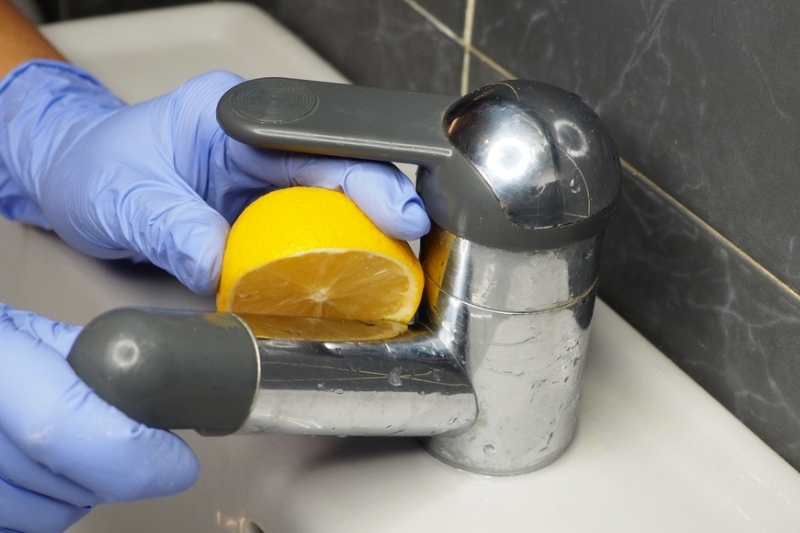
Our third cleaning hack also involves lemon. This time, it’s used for removing hard water stains on your taps.
Cut a lemon in half and rub it directly on the faucet surfaces. The citric acid in the lemon helps dissolve mineral deposits, leaving your taps shiny and free from hard water stains.
Rinse the area with water afterwards and wipe clean using a microfibre cloth. Make sure to try the taps thoroughly so more water marks don’t form.
4. Create a Multi-Purpose Bicarbonate of Soda Scrub
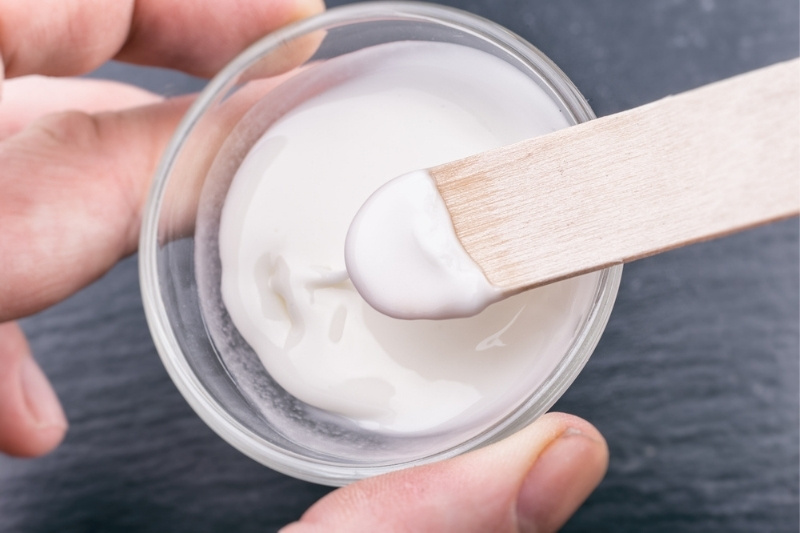
Bicarbonate of soda (also known as baking soda) is a powerful yet gentle abrasive that works wonders on various surfaces.
Create a bicarbonate of soda scrub by mixing it with a bit of water to form a thick cleaning paste. It should have a similar consistency to toothpaste.
This paste is excellent for neutralising odours and cleaning sinks, tubs, ovens, and other surfaces. Apply the paste using a scrub brush, gently scrub the surfaces, and rinse thoroughly.
5. Unclog Showerheads with Vinegar
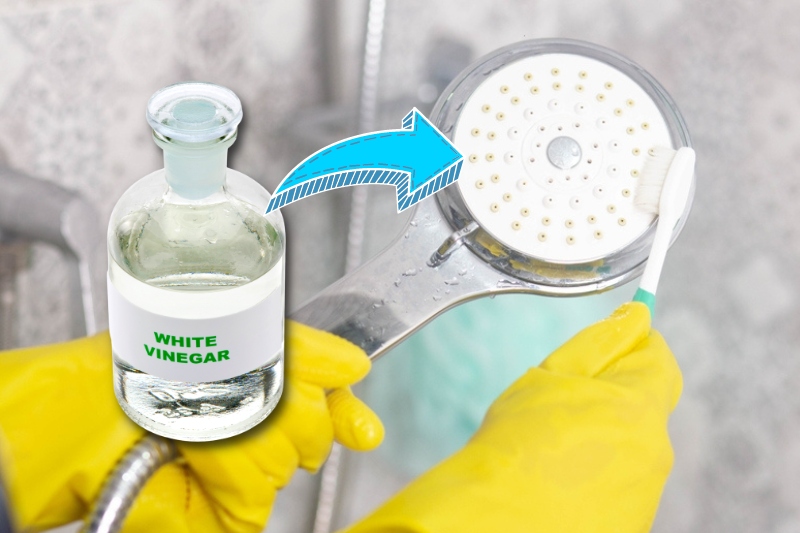
Mineral deposits can clog up your shower head over time, affecting water flow. If you’re experiencing this, our cleaning hack for shower heads provides the solution.
Fill a plastic bag with white vinegar and secure it around the showerhead using a rubber band. Ensure the showerhead is immersed in the vinegar, then leave it to soak for a few hours or ideally overnight.
The acidity of the vinegar will dissolve the mineral deposits. After soaking, remove the bag, run water through the showerhead, and enjoy improved water flow.
6. Use Grapefruit for a Natural Bathtub Cleaner
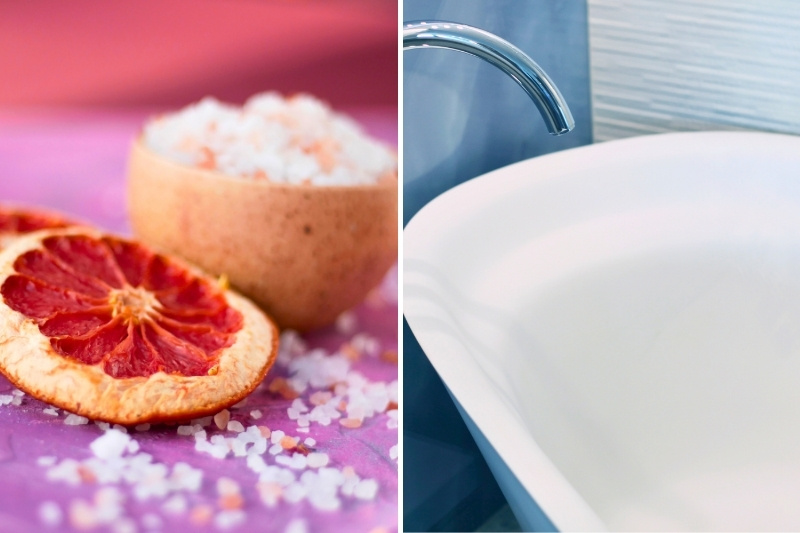
If you’re looking for a cleaning hack that provides a natural and effective way to clean your stained bathtub, try using grapefruit and salt.
Cut a grapefruit in half and sprinkle it generously with salt, then use the grapefruit halves as scrubbers to tackle soap scum and stains in the bath.
The natural acidity of the grapefruit, combined with the abrasive action of salt, helps break down grime, leaving your bathtub clean and smelling citrus fresh.
7. Washing-Up Liquid and Baking Soda for Stovetops
Stovetops quickly accumulate grease and stubborn stains, but a simple mixture of washing-up liquid and bicarbonate of soda can work wonders.
Apply a small amount of washing-up liquid to the stovetop, followed by a sprinkling of bicarbonate of soda.
Use a sponge or scrub brush to scrub the surface gently. The combination of the grease-cutting power of the soap and the mild abrasiveness of bicarbonate of soda helps lift and remove grime.
8. Clean Slatted Blinds Using Socks
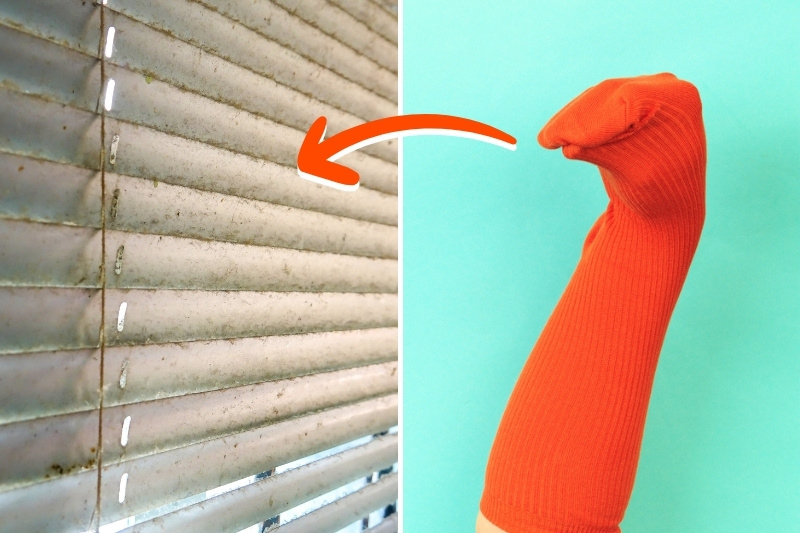
Dust can accumulate on blinds, but you can quickly remove it using a pair of old socks. Put an old sock on your hand and run it along each slat to clean your blinds effectively.
For extra cleaning power, dip the sock in the DIY all-purpose cleaner you made from water and vinegar (cleaning hack #1).
Then, run your hand along the bind slats to lift all dirt and grime. This method not only removes dust but also helps repel it, keeping your blinds cleaner for longer.
9. Wipe Electronic Screens with a Coffee Filter
Microfibre cloths work great when it comes to cleaning electronic screens. However, if you don’t have a clean one to hand and need an alternative, try using a coffee filter for a streak-free finish.
The texture of coffee filters is gentle and won’t scratch screens, and they effectively pick up dust, dirt, and fingerprints.
Simply wipe the screen with a clean, dry coffee filter to keep your electronics looking pristine and throw it away once you’re done.
10. Use a Lint Roller for Dusting Lampshades
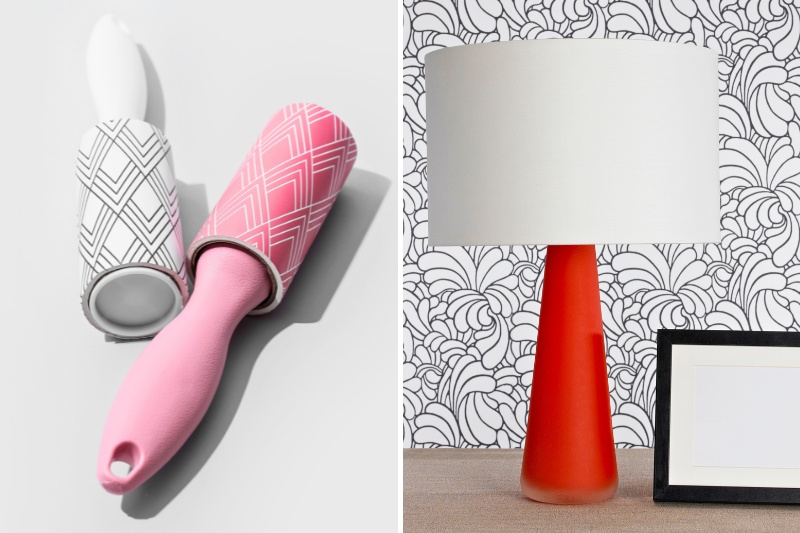
Lampshades can be challenging to clean due to their delicate nature. However, a lint roller or lint brush is an effective tool for removing dust and lint.
Roll the lint roller gently over the lampshade to lift away particles. For fabric lampshades, use a gentle touch to avoid damaging the material.
You can also use your lint roller to get hair out of carpets and upholstery, as well as keep your clothes free from lint so that you and your home can look their best!
11. Dust Skirting Boards with Dryer Sheets
Skirting boards can attract dust, but a dryer sheet is a clever way to remove this buildup.
Simply run a dryer sheet along the surface of your skirting as you would a regular duster. The material is designed to trap lint and so easily collects all dust from the surface.
This cleaning hack can also help to keep your skirting boards cleaner for longer. The anti-static properties of the dryer sheet help prevent more dust from settling, making future cleanings easier.
12. Use a Squeegee for Pet Hair

Shower squeegees aren’t just for cleaning shower doors—a squeegee can also be used to effectively remove pet hair from carpets and upholstery.
Simply run the squeegee along the surface you want to clean, and the rubber edge will lift the pet hair and gather it into one pile.
You can then easily pick the ball of hair up with your fingers and throw it away. This pet hair cleaning hack is handy for areas where vacuuming may not be as effective.
13. Clean Shower Curtains with Salt
Mould and mildew thrive in damp conditions, such as your bathroom. Shower curtains are one of the most common places to develop mildew over time, as the base of the curtain is often damp.
To combat this, mix equal parts salt and water to create a paste. Apply the paste to the affected areas to clean the shower curtain and scrub with a brush or sponge. The abrasive texture of the salt helps remove mildew stains, leaving your shower curtain looking fresh and clean.
14. Refresh Your Dishwasher with Vinegar
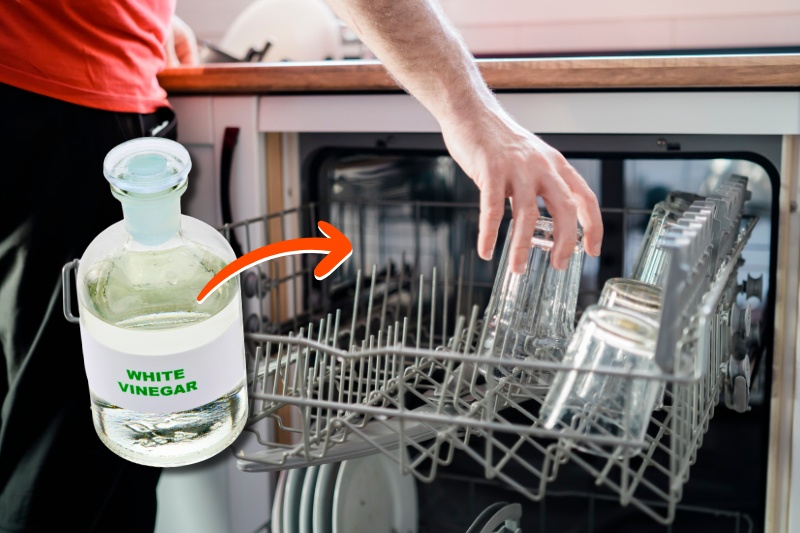
Over time, dishwashers can develop nasty odours and mineral deposits. This can impact how well it cleans your dishes and make loading and unloading the dishwasher an unpleasant task.
To keep your dishwasher running smoothly, place a cup of white vinegar on the top rack and run a cycle with no dishes.
The vinegar used in this dishwasher cleaning hack helps break down grease, eliminate bad smells, and remove mineral buildup, leaving your dishwasher clean and odour-free.
15. Vinegar for Smelly Rubbish Bins
Rubbish bins can develop unpleasant odours over time, especially if you don’t clean your kitchen bins regularly.
To neutralise these foul smells, place a paper towel soaked in white vinegar at the bottom of the bin each time you empty it.
The vinegar will help absorb and eliminate unpleasant smells, keeping your rubbish bin smelling fresh.
You can use this must-know cleaning hack on all the bins in your home—wheelie bins, kitchen bins, bathroom bins… the lot!
16. Create These DIY Toilet Bombs
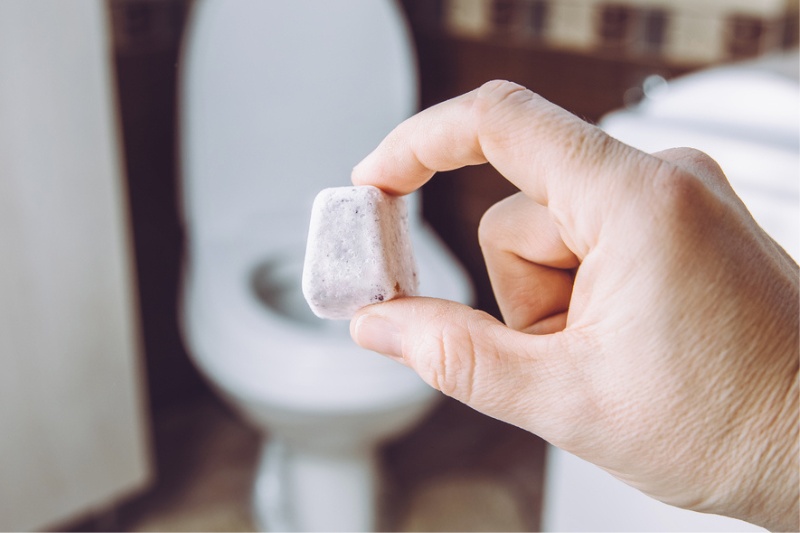
Toilet bombs are an excellent way to keep your toilet bowl clean and stain-free. To make the toilet bombs, mix 250g of bicarbonate of soda with a little citric acid and a few drops of essential oil. The mixture should be wet and mouldable—not too dry or too runny.
Form small balls from the mixture and let them dry. Drop a toilet bomb into the bowl and let it fizz. Scrub the bowl with a brush, and the combination of ingredients will help clean and deodorise.
17. Denture Tablets for Toilet Stains
If you don’t want to make your own toilet bombs, try using denture tablets to clean your toilet instead.
Simply drop a couple of denture tablets into the bowl and let them fizz. The effervescence and cleaning agents in denture tablets help break down stains and deposits.
Allow them to sit for at least 15 to 20 minutes before scrubbing the bowl with a toilet brush. Flush to reveal a fresher and stain-free toilet bowl.
18. Remove Carpet Stains with Shaving Cream

Shaving cream isn’t just for grooming—it can also be effective in removing carpet stains.
Apply a small amount of shaving cream to the stained area, let it sit for a few minutes, and then blot it with a clean cloth.
The shaving cream helps clean the stain from the carpet fibres much more easily.
Alongside carpet stains, you can also use shaving foam to clean glass and mirrors, upholstered furniture, stainless steel, and jewellery.
19. Silver Jewellery Shine with Toothpaste
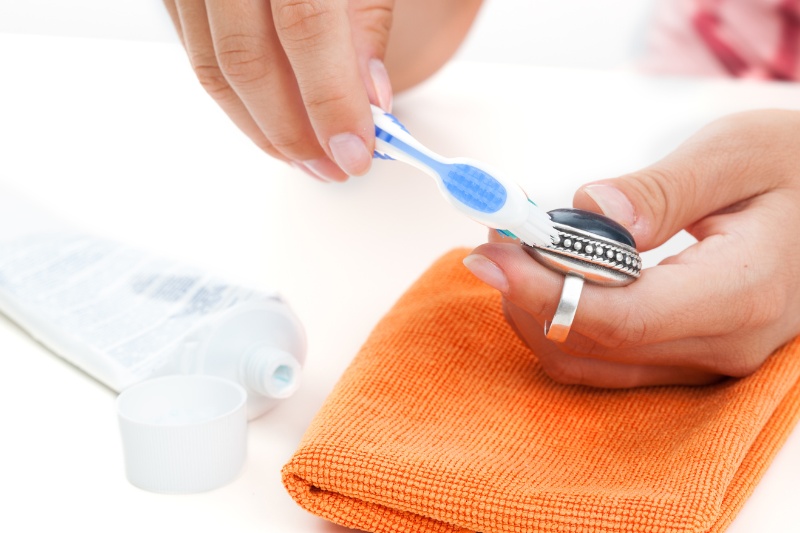
Revitalise your dull silver jewellery by applying a small amount of non-abrasive toothpaste to the metal.
Use a soft-bristled toothbrush to gently scrub the jewellery, paying attention to intricate details. Rinse thoroughly and dry with a clean cloth.
This toothpaste cleaning hack helps remove tarnish, leaving your silver accessories sparkling and polished. Avoid using this hack on pearls or jewels, as it could damage their appearance.
20. Clean Blenders with Soap and Water
Cleaning a blender can be tricky due to its sharp blades and intricate design. To simplify the process, add warm water and a few drops of washing-up soap to the blender.
Secure the lid and blend on high for 10 to 15 seconds. The soapy water will reach all parts of the blender, effectively cleaning the blades and container.
Rinse thoroughly with water after using this cleaning hack to remove any soap residue before making your next sauce or smoothie.
21. Lemon and Salt for Chopping Boards
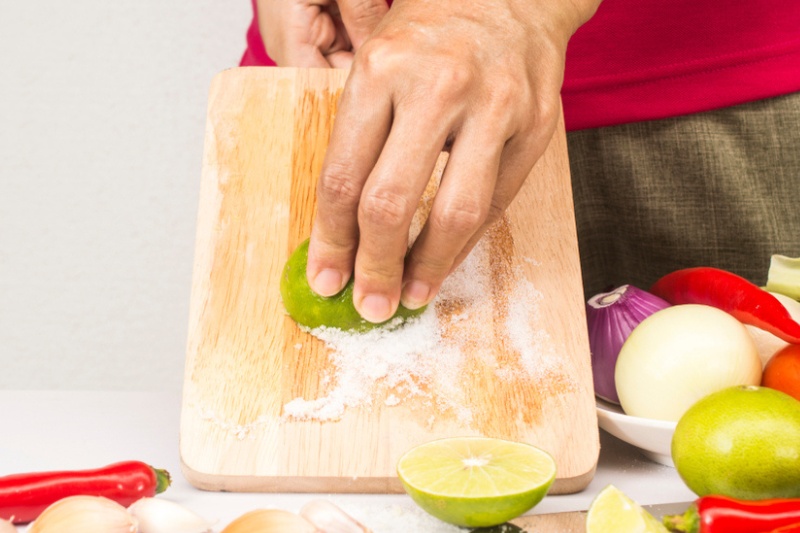
Here, we have yet another cleaning hack using lemon. This time, for cleaning your chopping boards.
Cutting boards, especially plastic ones, can develop stains and odours over time. To counteract this, cut a lemon in half and sprinkle the exposed flesh with coarse salt.
Scrub the cutting board with the lemon and salt mixture, allowing the citric acid and abrasive salt to work together to lift stains and eliminate odours. Rinse the cutting board with water to finish.
22. Vodka Mattress Refresher
Mattresses can develop odours from sweat, spills, and other factors. Create a simple mattress freshener by mixing equal parts vodka and water in a spray bottle.
Lightly mist the mattress surface, paying attention to areas with odours and stains to leave your mattress smelling clean and fresh.
Like white vinegar, vodka can be used for cleaning as it is naturally effective at neutralising unpleasant smells.
However, it doesn’t have a pungent smell, making it a better choice for deodorising beds and mattresses.
23. Try Our DIY Air Freshener
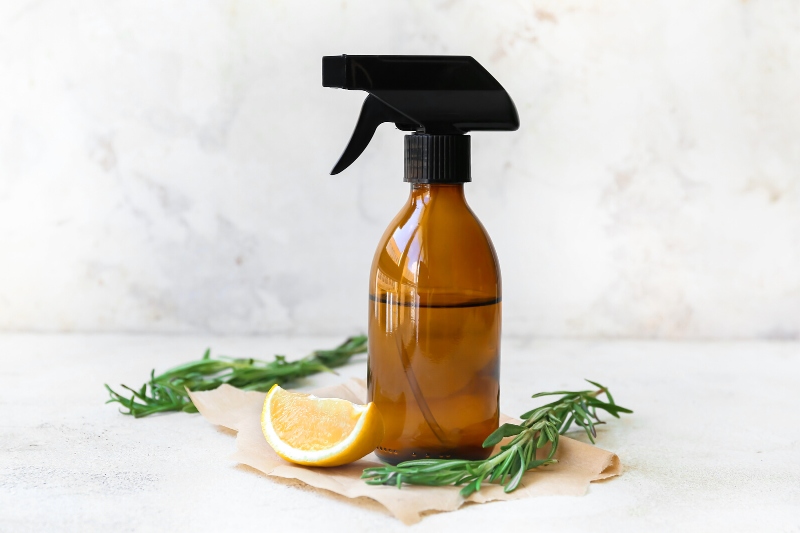
Customise your air freshener with our DIY recipe. In a spray bottle, combine water, bicarbonate of soda, and a few drops of your favourite essential oils.
Shake the bottle well before each use and spray it in various rooms to freshen the air.
This homemade air freshener is a natural alternative to commercial products. The bicarbonate of soda helps neutralise odours, while the essential oils provide a pleasant fragrance.
24. Make a DIY Glass Cleaner
Glass surfaces, such as windows and mirrors, often accumulate fingerprints, smudges, and other marks that can be challenging to clean effectively.
A DIY cleaning solution of water, vinegar, and washing-up liquid can provide a powerful solution for streak-free and crystal-clear glass.
Mix equal parts water and white vinegar in a spray bottle and add a drop of dish soap. Shake gently to combine and spray onto windows and shower screens for streak-free glass cleaning.
25. Clean Shower Door Tracks with Vinegar
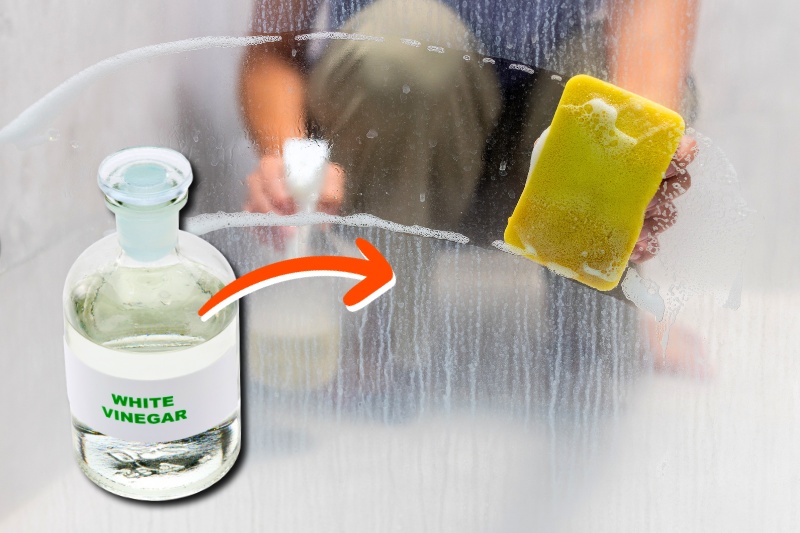
Shower door tracks are notorious for collecting grime and soap scum that looks unpleasant and can be a breeding ground for germs.
To tackle this, soak paper towels in white vinegar and place them directly onto the tracks. Let them sit for at least 30 minutes or longer if the grime is stubborn.
The acidity of the vinegar helps dissolve mineral deposits and grime. After soaking, use an old toothbrush or a narrow brush to scrub away loosened debris, leaving behind a clean plastic strip.
26. Clean Cast Iron Pans with Salt
Cast iron pans require special care to maintain their seasoning. To clean cast iron, sprinkle a generous amount of salt onto the pan while it’s still warm (but not scorching hot).
Use a soft brush or sponge to scrub the salt into the pan, lifting away any food residue.
The salt acts as a gentle abrasive, helping to clean the surface without compromising the pan’s seasoning. This cleaning hack helps to prevent your pans from rusting prematurely.
27. Use Hydrogen Peroxide on Grout
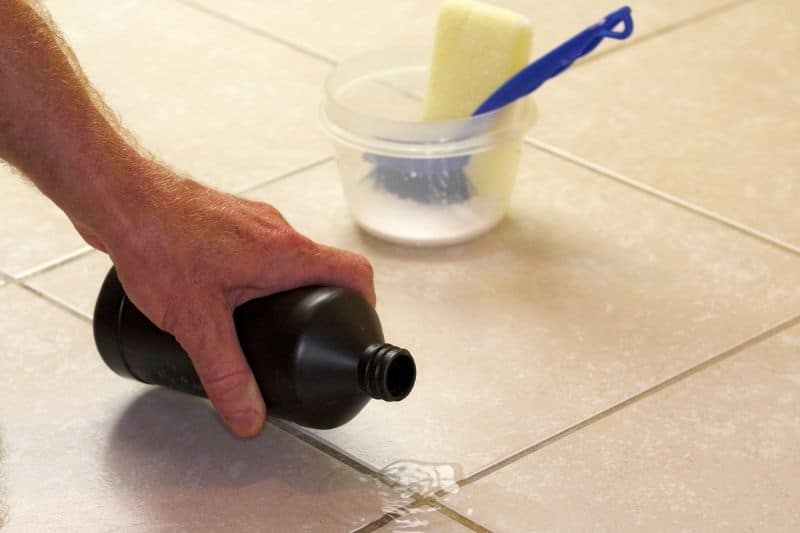
Grout lines in tile surfaces can become discoloured and stained over time, but our hydrogen peroxide hack can clean and whiten grout in minutes.
Apply hydrogen peroxide directly to the grout using a spray bottle. Let it sit for 10 to 15 minutes to allow the peroxide to penetrate and lift stains.
Once the time has passed, scrub the grout lines with a stiff brush to remove dirt and discolouration. Rinse with water to reveal whiter and cleaner grout.
28. Make Your Own Carpet Deodoriser
Freshen up your carpets with our homemade deodoriser. Mix bicarbonate of soda with a few drops of your favourite essential oil in a bowl and stir well to distribute the oil evenly.
Sprinkle the mixture liberally over your carpets and let it sit for at least 15 minutes or longer if possible.
The baking soda helps absorb odours, and the essential oil imparts a pleasant fragrance. Vacuum thoroughly to remove the deodoriser and leave your carpets smelling fresh.
29. Use Rubbing Alcohol for Ink Stains

Ink stains on clothing or fabric can be challenging to remove, but rubbing alcohol is an effective remedy.
Dab a small amount of rubbing alcohol onto the stained area using a clean cloth. Blot the stain gently (avoid rubbing, as it may spread the ink), then rinse with cold water and launder as usual.
The alcohol dissolves the ink, making it easier to wash away. However, before using this cleaning hack, test the alcohol on an inconspicuous area—it may be unsuitable on some delicate fabrics.
30. Clean Stainless Steel with Olive Oil
Olive oil has several cleaning uses, including cleaning stainless steel. Fixtures, sinks, and appliances made from this metal benefit from the natural shine and conditioning properties of olive oil.
Apply a few drops of olive oil onto a soft cloth or paper towel, then wipe down the stainless steel surface in the direction of the grain.
The olive oil not only cleans stainless steel but also imparts a protective layer that helps prevent fingerprints and smudges. Buff the surface with a dry cloth for a streak-free and polished finish.

Hannah has a passion for cleaning. She worked her way around Australia by cleaning hostels in exchange for free accommodation and used her cleaning skills to bag a job as a chalet host for a luxury ski company in France.
